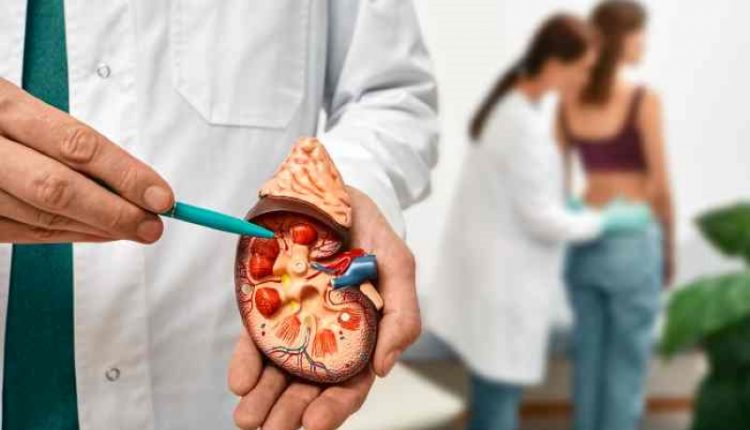
What is renal hydronephrosis and how it is treated
Renal hydronephrosis is a very common condition and in most cases benign in origin
Hydronephrosis refers to a dilatation of the urinary excretory tracts inside the kidney, which swell as a result of urine stagnation due to generally obstructive (but not limited to) causes, which obstruct normal urine flow.
Types of hydronephrosis
Hydronephrosis can present itself as:
- acute: it appears suddenly as, for example, in the case of stones;
- chronic: manifests itself with progressive worsening.
In addition to this, it can be
- uni- or mono-lateral: i.e. affecting only one kidney;
- bilateral: affecting both kidneys.
Although it is a condition that generally affects adults and the elderly, renal hydronephrosis is also common among children, so much so that in these cases it is referred to as foetal or prenatal hydronephrosis pertaining to the paediatric urologist.
Degrees of renal hydronephrosis
Depending on its progression over time, hydronephrosis can present itself in 4 stages or grades:
- Grade I: slight dilatation of the renal pelvis, i.e. the initial section of the urinary tract, which then develops into the ureter;
- Grade II: in addition to slight dilatation of the pelvises, the renal calices, the goblet-shaped ducts that channel urine to the pelvises and ureters, also swell slightly;
- Grade III: pelvises and calices dilate not slightly, but moderately;
- grade IV: pelvises and calices expand severely and the parenchyma, which is the functional tissue that produces urine, thins out.
The underlying causes of renal hydronephrosis, i.e. stagnation of urine in the kidney, can be
- mechanical obstruction, given by elements internal/external to the ureter (kidney stones, urothelial tumours, retroperitoneal fibrosis, etc.) or malformations (e.g. stenosis of the pyelo-urethral joint, an abnormal narrowing of the passage point from the pelvis to the ureter) that occlude or limit the normal outflow of urine;
- urinary reflux, i.e. an upflow of urine to the kidney, again due to, for example, congenital defects or diseases of the nervous system (neurological bladder). Even the most common urological pathology in adult men such as untreated obstructive prostatic hypertrophy can be the cause of hydronephrosis.
Symptoms of renal hydronephrosis
Renal hydronephrosis may present with:
- sudden sharp pain in the affected renal area;
- feeling of heaviness in the flank;
- fever and chills, in the case of infection from infected stagnant urine;
- nausea.
Usually, unlike what one might imagine, the inability to urinate is not a symptom of hydronephrosis, unless it is as a result of benign prostatic hypertrophy or the patient has a particular medical history.
Let us remember, in fact, that there are two kidneys and consequent urinary tracts.
This symptomatology, in several cases, may be blurred or absent, so much so that the pathology is only really detectable by ultrasound checks.
Regular examinations and early diagnosis, therefore, become essential.
Health risks
If not properly treated, renal hydronephrosis can lead to kidney failure and even functional loss of the kidney.
Even in the case of kidney stones, which can initially cause acute and severe pain, the doctor points out that it can happen that the kidney starts to give less discomfort over time.
This does not necessarily mean that the clinical situation is improving, but rather that the kidney is starting to function less.
Therefore, in the case of renal colic, it is always necessary to be examined by a urologist.
How the diagnosis is made
During or following the specialist examination, the suspicion of hydronephrosis is verified by the doctor by means of an easy-to-perform first-level test such as renal ultrasound, which immediately provides the diagnosis of hydronephrosis, but without providing data on the underlying cause.
Then a necessary second-level test is a CT scan with contrast medium that will give information on the cause in order to guide treatment
As for blood tests, on the other hand, one can simply go and investigate creatininemia, which can indicate the presence of kidney failure.
How to treat hydronephrosis
With the exception of special cases such as neurological diseases, which may require different treatments, the treatment of hydronephrosis is generally endoscopic or surgical, to remove the physical obstacles that cause urine stagnation.
In an emergency, it may be necessary to place a ureteral stent with a small tube inserted to drain the kidney in order to secure the patient and treat the cause safely.
However, this is not always possible, so we then proceed with the use of a temporary external drainage, known as a ‘nephrostomy’.
Lasers, endoscopic procedures and robotic surgery are now able to treat pathologies such as stones, malformations of the urinary apparatus and small tumours underlying hydronephrosis in a minimally invasive manner and with an increasingly better aesthetic-functional result.
Read Also
Emergency Live Even More…Live: Download The New Free App Of Your Newspaper For IOS And Android
Kidney Stones: What They Are, How To Treat Them
Creatinine, Detection In Blood And Urine Indicates Kidney Function
How To Keep Your Kidneys Healthy?
Colour Changes In The Urine: When To Consult A Doctor
Paediatric Urinary Calculus: What It Is, How To Treat It
High Leukocytes In The Urine: When To Worry?
The Colour Of Pee: What Does Urine Tell Us About Our Health?
Kidney Function Replacement Treatment: Dialysis
Chronic Kidney Failure: Causes, Symptoms And Treatment
Pancreas: Prevention And Treatment Of Pancreatic Cancer
Gestational Diabetes, What It Is And How To Deal With It
Pancreatic Cancer, A New Pharmacological Approach To Reduce Its Progression
What Is Pancreatitis And What Are The Symptoms?
Kidney Stones: What They Are, How To Treat Them
Acute Pancreatitis: Causes, Symptoms, Diagnosis And Treatment
Kidney Cancer: Laparoscopic Surgery And The Latest Technologies



